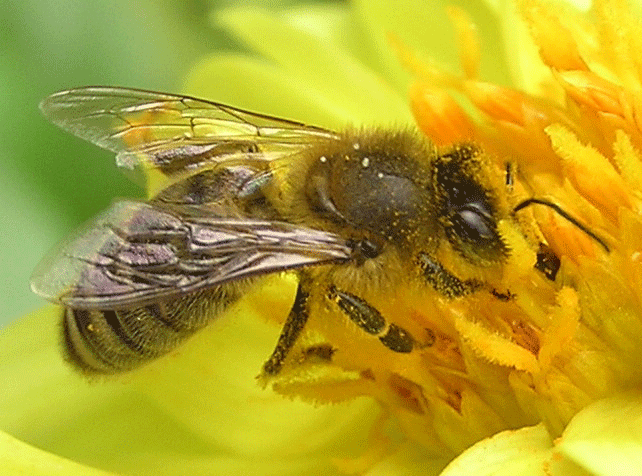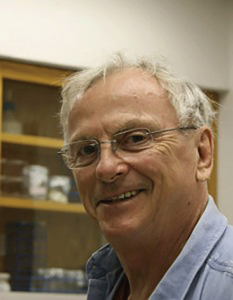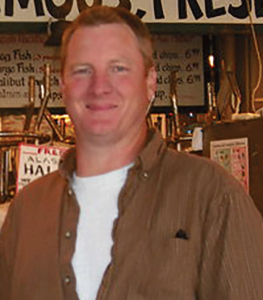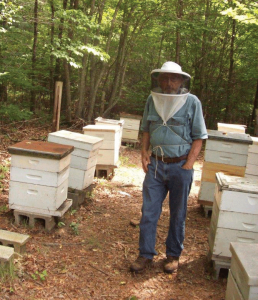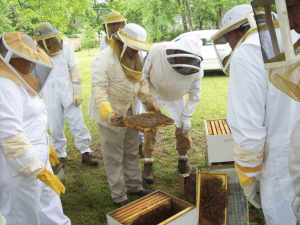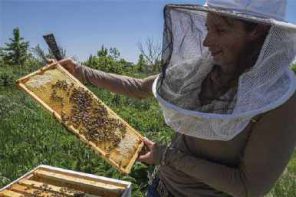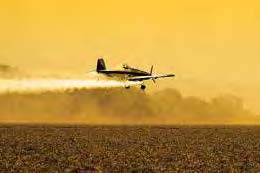By: Malcolm Sanford
There have been a lot of questions recently about “Russian honey bees.”
The term is increasingly making its way into the beekeeping literature and discussion lists on the Internet. A Russian Honey Bee Breeders Association (RHBA) has been formed seeking to provide more information about this honey bee and attempt to deliver it to the beekeeping public. The purpose of this article is to look more closely at this association, and attempt to make some conclusions about its possible future. The information included in this report has been gleaned from a number of sources, including printed references and personal interviews.
Honey bee stock was brought by the USDA to the U.S. In 1997, from the Primorsky region of far eastern Russia. For over a hundred years the honey bees in that area had not been treated for any pests or diseases and were considered resistant to Varroa, tracheal mites and American foulbrood, while at the same time being good honey producers with excellent overwintering qualities.
Breeding, Genetics, Stock Improvement and Management of Russian Honey Bees for Mite and Small Hive Beetle Control and Pollination, Research project Number: 6413-21000-012-00), began Oct 01, 2008, under the leadership of Dr. Tom Rinderer, then leader of the Baton Rouge laboratory.
He and Dr. F. Ruttner both concluded that the actual subspecies being brought to Louisiana and quarantined on a nearby island was Apis mellifera macedonica, a relative of the Carniolan bee (Apis mellifera carnica). Both used a technique called morphometrics (structural analysis), which was in vogue at the time before substantive genetic identification techniques were developed. However, according to Dr. Rinderer, neither of these determinations were published.
Candidate queens were thoroughly vetted for possible problems through extensive quarantine efforts by the Honey Bee Breeding, Genetics and Physiology Laboratory, Baton Rouge, Louisiana. They were then released via a CRADA (Cooperative Research And Development Agreement) to selected beekeepers.
It is important to understand that the Baton Rouge Laboratory does not actually “certify” stock according to Drs. Lilia de Guzman and Lanie Bourgeois, two USDA scientists supporting the program. The Association “certifies” its members. They clarified the situation this way:
- USDA/ARS does not certify any bee stock especially Russian bees.
- The Bee Lab does not certify bee stock as Russian or Non-Russian.
- The Russian Honey bee Breeding Association (RHBA) does not certify a stock, line or individual bee as Russian.
- The DNA test that Dr. Bourgeois performs only determines the probability of assignment as Russian or non-Russian.
- The RHBA only certifies individual breeders who have produced bees that score > 0.50 (most samples are actually scoring 0.75 and higher) on the DNA test AND produce records that show honey production and mite resistance by measuring mite growth (using soapy water wash) over time. These latter two (main) factors determine the best colonies from a member’s two lines from which samples are collected and shipped to the lab for DNA testing. Members are also encouraged to monitor for other beekeeping characteristics including defensive behavior.
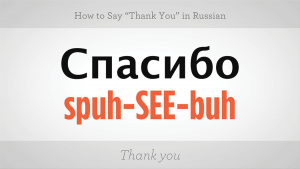 The RHBA’s board of directors decides who is or is not certified, according to current President Steven Coy. “The members’ records are stored by the Association. However they are private and cannot be shared with non-members because they contain privileged information on specific lines. Some lines will never be released to the public. However, they contribute to the genetic diversity of the stock and its disease resistance. Thus, it is important to understand that customers buying a Russian queen are not simply buying from a specific line, which is not revealed, but instead purchasing the results of multiple years of selection from the best mite resistant and highest honey producing queens available from all certified members.”
The RHBA’s board of directors decides who is or is not certified, according to current President Steven Coy. “The members’ records are stored by the Association. However they are private and cannot be shared with non-members because they contain privileged information on specific lines. Some lines will never be released to the public. However, they contribute to the genetic diversity of the stock and its disease resistance. Thus, it is important to understand that customers buying a Russian queen are not simply buying from a specific line, which is not revealed, but instead purchasing the results of multiple years of selection from the best mite resistant and highest honey producing queens available from all certified members.”
Each prospective member is issued a detailed manual, which provides a good many criteria for certification. According to the RHBA web site: “To become a certified breeder for the Russian Honey Bee Breeders Association members must annually demonstrate their qualifications by producing queens from designated lines in isolated mating yards. These mating yards must be stocked with sufficient numbers of appropriate drone source colonies. Line queens must be produced in sufficient numbers so that a large number of colonies started with these queens can be monitored for further selection and additional queens can be shipped to fellow members to lead drone source colonies and also so that the lines can be evaluated by the entire membership.”
Becoming certified is not an easy task. Steven Coy was one of the original members of the RHBA and did not have to jump through many hoops in the beginning. However, since leaving Coy’s Honey Farm to form his own queen-rearing business, he was forced to essentially start over as a new member. He says he now has a greater appreciation for the work and planning involved in becoming a certified member, concluding: “We have had a total of 20 members since our inception. Only 12 people have been able to do this.”
The Association evaluates about 800 or more colonies each year, selecting about 90 queens based on mite growth and honey production. Fifty to 60 of those are sent for DNA testing and those that pass are then used as breeders. The .50 score for DNA noted earlier was set because some were having difficulty with drone saturation. That problem has been solved and most are now coming in at .75 or higher.
Membership of the RHBA ranges from large commercial pollinators to smaller outfits selling honey and queens. Each member has their own business plan. Some are only interested in maintaining the stock for their current and future use, producing honey and pollinating, while others aspire to become queen producers.
Some prominent members of the Association are:
Coy’s Honey Farm Inc., Jonesboro, Arkansas, which began in 1969 when grandfather Gene Coy brought 12 hives. According to the website, “Our primary goal is to produce honey, but we also pollinate almonds in California. Our bees collect nectar from Cotton, Soybean, and Wildflowers while also pollinating Cucurbits in Northeast Arkansas and the Delta Region of Mississippi. They also collect nectar from Spring Ti-Ti, Gallberry, and Chinese Tallow along Mississippi’s Gulf Coast.”
Coy’s Honey Farms began using Russians almost by accident. They traditionally selected their own queens and used Ohio queens and others as breeders, acquiring some Russian stock in the process. In the winter of 2000 – 2001, there were heavy Winter losses of non-Russian hives. However, 52 Russian hives were checked in the Spring of 2001, resulting in few losses. This along with recommendations/discussions by others, set Coy’s honey Farms on the track to use Russian Stock. They became charter members of the Russian Honey Bee Breeders Association in 2008. Coy’s is currently the only large, migratory outfit to move to Russian stock. Significantly, this was done to increase honey production and reduce losses, not to produce and sell queens to the beekeeping public.
Recently, Steven Coy started Coy Bee Company, LLC so that he can focus on producing Russian queens for distribution to the beekeeping public. Currently President of the RHBA, he serves as a board member for two national bee industry organizations, as well as the U.S. Beekeeping Industry representative to the EPA’s Pesticide Program Dialogue Committee. He frequently gives presentations at national and state meetings and is also active in the MS Beekeepers Association and MS Farm Bureau Federation.
Carl Webb of Clarkesville, Georgia began keeping bees in 1959 and maintained his activity while living throughout Europe, Africa and the United States. He has a BS in Forestry and studied for both a masters degree in government administration at George Washington University and an MBA at Georgia State University. Carl served as president of the Georgia Beekeepers association and cooperated with the University of Georgia on its first Varroa mite threshold study, comparing, Russian bees with other Stocks in 2004 and 2005. He also participated in a project comparing Minnesota Hygienic with South Georgia honey bees.
He lists the following characteristics of his operation:
- No antibiotics
- No beetle control (traps, poisons)
- No pollen substitutes
- No stimulants such as essential oil
- No screened bottom boards
- No scheduled brood comb rotation
- No scheduled queen replacement (half of queens are two years old or older)
- No feeding of sugar in any form (except for queen rearing and starter nuclei)
- No small-cell foundation
- Use Pierco pre-waxed foundation
Last year, Carl was forced to treat field colonies with Apiguard® in August, to prevent fall colony losses that had increased during five years of a no-treatment regimen. He repeated this in August of 2016 with two more treatments spaced apart. He reports that test yards from which breeder queens are selected are never treated with anything, an important distinction.
Carl Webb is a much smaller beekeeper than Coy’s Honey Farms. He is not migratory, but sells honey to the public, as well as queens to other beekeepers through his operation.
Harry Fulton of Brooksville, Mississippi is one of the newer certified members. He started beekeeping around 1975, and was employed at Mississippi Department of Agriculture since 1971, retiring after 38 years of service. He is two-time president of Apiary Inspectors of America and was Secretary-Treasurer of the Mississippi Beekeepers Association for 35 years. Certified in May 2012, Harry has built up his hive count from 70 to 200 hives, which is what the Association requires of members. He states that becoming a member of the Association requires one to do “homework” and “be dedicated.”
Many current certified members do not appear to be producing queens in appreciable numbers. Again, selling queens to the beekeeping public is not part of the Association’s stated objectives. This might constitute a dilemma for the RHBA in the future. As the reputation of the Russian bee becomes more pronounced, the demand for these queens continues to increase. Steven Coy says: “I have shipped queens to all regions of the U.S. including Alaska (not Hawaii) and frequently get requests from beekeepers in all parts of Canada. Many of them beg me to ship them queens. Unfortunately for them the paper work and fees required for shipping queens into Canada are too much trouble for just a few queens. I have even shipped queens to the country of Jordan for a research project. It is not uncommon to receive requests from beekeepers in Europe and in particular from Italy, Netherlands and France. I have even received requests from a beekeeper in South America.”
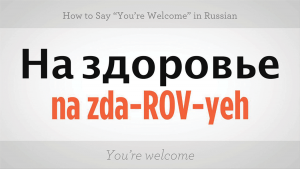 At the moment, ill-perceived behavioral differences may actually keep demand down. Russian bees have been accused of being prolific swarmers, unable to produce honey crops, and overly defensive. These bees are somewhat “different” in behavior, and require adjustments in management. That they are generally tolerant to both Varroa and small hive beetle, however, is a big selling point. At least one Wisconsin beekeeper sings their praises, according to a recent news release:
At the moment, ill-perceived behavioral differences may actually keep demand down. Russian bees have been accused of being prolific swarmers, unable to produce honey crops, and overly defensive. These bees are somewhat “different” in behavior, and require adjustments in management. That they are generally tolerant to both Varroa and small hive beetle, however, is a big selling point. At least one Wisconsin beekeeper sings their praises, according to a recent news release:
Sue Dompke hopes that Russian honey bees are the answer to the collapse of the American honey bee population, which have been decimated by mites. “They’re mite resistant, they’re cold-hardy, they’re hygienic, and they effectively manage their resources,” Dompke said. “They’re perfectly suited for Wisconsin, especially Washington Island, because we’re at the 48th longitudinal parallel replicating that indigenous area of Primorsky.” There’s a very limited supply in the United States with only 15 Russian bee breeders according to Dompke, concluding: “If you’re purchasing Russian honey bees and you haven’t purchased them from a Russian bee breeder, they’re probably not 100% Russian.”
As the experience of Steven Coy and Harry Fulton shows, assuming the responsibilities of a certified member requires a great degree of dedication. It also demands experience in managing Russian bees, which are known to be quite different than the run-of-the-mill Italian honey bee that mostly makes up the U.S. honey bee population. The significant duties and responsibilities of the certification process means that inevitably the price of queens sold by RHBA members must be greater than those generally available on the market. The Association is actively soliciting members. A limited supply and increasing demand for queens, which can be sold at premium prices, appears to indicate significant opportunities for others to enter the fray and become certified.
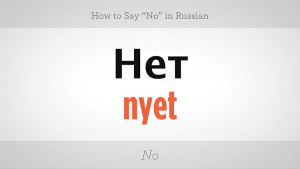 The distinction of “Russian” in the context of this article signifies that the name is not so much a race or line of honey bees as one might initially think, but a brand of the RHBA. Unfortunately, many breeders who are not certified members of the RHBA are marketing “Russian bees,” potentially damaging the brand. Protecting it, therefore, is a major challenge for the Association as it goes forward. To do so will require significant advertising and educational efforts oriented toward both potential new members and customers. It may in fact be too late. One possibility is to instead re-brand the specific stock reared by the RHBA to something that is less generic and more specific. “Primorsky” comes to mind.
The distinction of “Russian” in the context of this article signifies that the name is not so much a race or line of honey bees as one might initially think, but a brand of the RHBA. Unfortunately, many breeders who are not certified members of the RHBA are marketing “Russian bees,” potentially damaging the brand. Protecting it, therefore, is a major challenge for the Association as it goes forward. To do so will require significant advertising and educational efforts oriented toward both potential new members and customers. It may in fact be too late. One possibility is to instead re-brand the specific stock reared by the RHBA to something that is less generic and more specific. “Primorsky” comes to mind.
The RHBA has a unique possibility to produce and market a Varroa-tolerant honey bee stock that could be the envy of other queen breeders around the U.S. and perhaps the world. This opportunity has been provided to a great extent by the vision and effort of the USDA Agricultural Research Service, which continues to do the testing. It will be up to the “certified” members of the RHBA to maintain the stock’s integrity. All beekeepers should be cheering them on.
To see the full article along with live links, search for “Russian bees” at http://beekeep.info.
In 2008, the Russian Honey Bee Breeders Association (RHBA) was created with the following goal:
The long-term objective of this project is to develop the economic value of Russian honey bees (RHB) through genetic improvements and devise innovative management strategies to increase the stock’s general and pollinating productivity. It focuses on multiple interrelated projects with the following objectives:
Develop procedures for identification of RHB as a stock certification tool, determine the genetic makeup of feral bees, and identify genes contributing to mite resistance and survivability.
Develop management techniques (e.g., determine economic thresholds for Varroa mite treatment, develop cultural techniques for small hive beetle (SHB) management in standard and nucleus colonies, and determine winter management and spring build-up strategies to build RHB populations for crop pollination (e.g., for almond).
Determine if there are genetic components of RHB response to emerging problems (such as colony collapse disorder or CCD) once syndromes and causes are identified.
Use traditional breeding techniques to develop RHB with improved economic traits.
Develop procedures for routine identification of sex alleles and determine queen relationships in multiple queen colonies.
Something called marker-assisted selection is a major mechanism by which much of the stock is tested by the Baton Rouge Laboratory. The association does not sell queens as breeder stock, but provides a mechanism whereby the beekeeping public can take advantage of the stock by purchasing daughters. The stated goal is to maintain and improve the genetic lines of Russian honey bees through propagation and selective breeding. The website http://www.russianbreeder.org shows thirteen members at the moment, who are committed to the following:
“We’ve determined that in order for an operation to produce Russian stock both with genetic integrity and in sufficient numbers it’s necessary that each member must operate a minimum of two hundred colonies. Additionally, the entire outfit must be made up of Russian stock or be moving rapidly toward that goal.
“It is required that mating yards, especially those that produce ‘selection’ queens, are isolated, and that they have well stocked drone source colonies of the appropriate lineage and in sufficient numbers. (We’ve set a ratio of one good drone source colony for 20 mating nucs. So, for example, with 24 well-stocked drone source colonies representing two colonies from each of the 12 appropriate lines, one could set out 480 mating nucs.)”
Malcolm Sanford is the retired Extension Apiculturist from Florida and publisher of Apis Information Resource Newsletter – http://apisenterprises.com/vita.htm.







